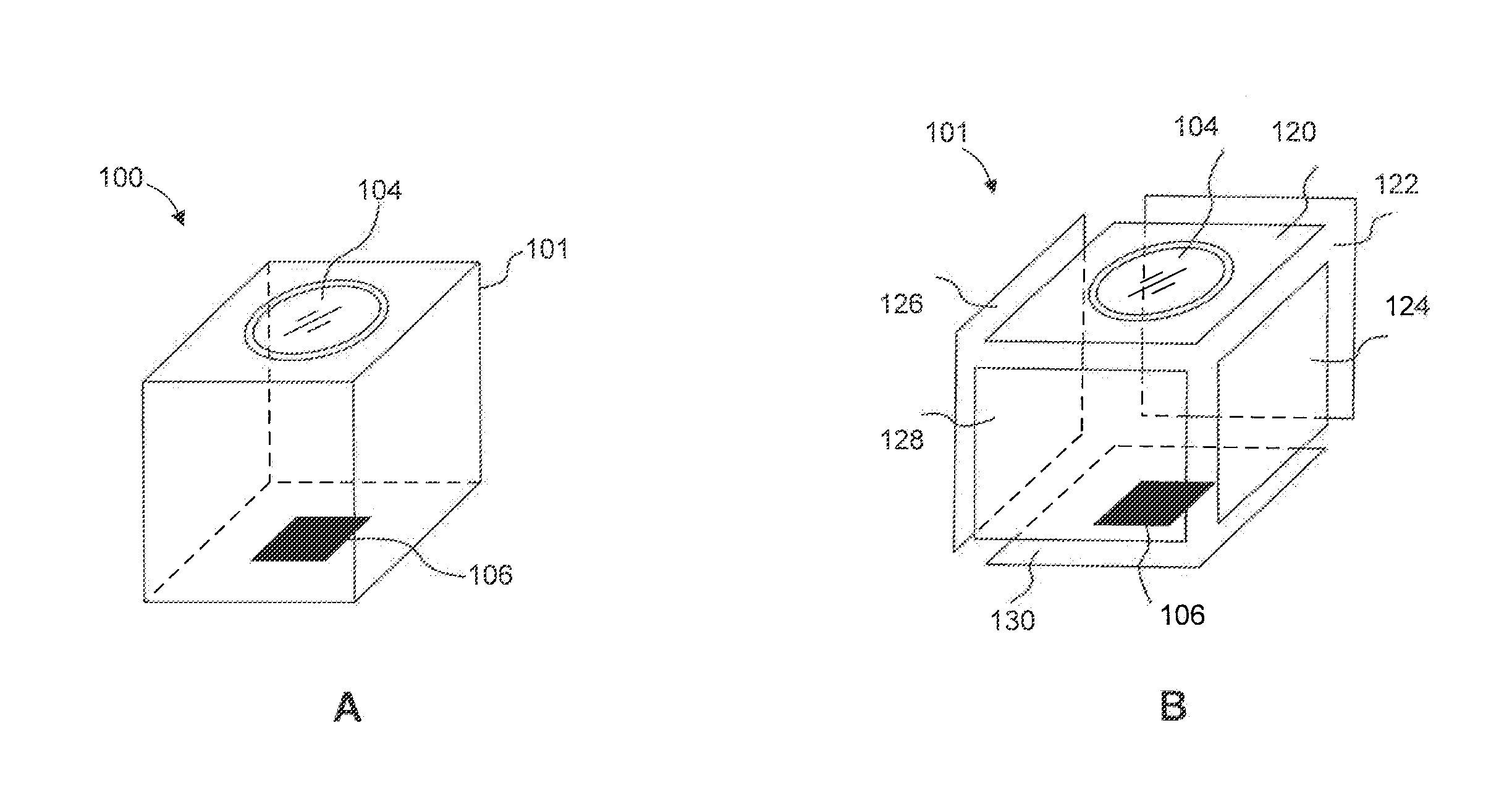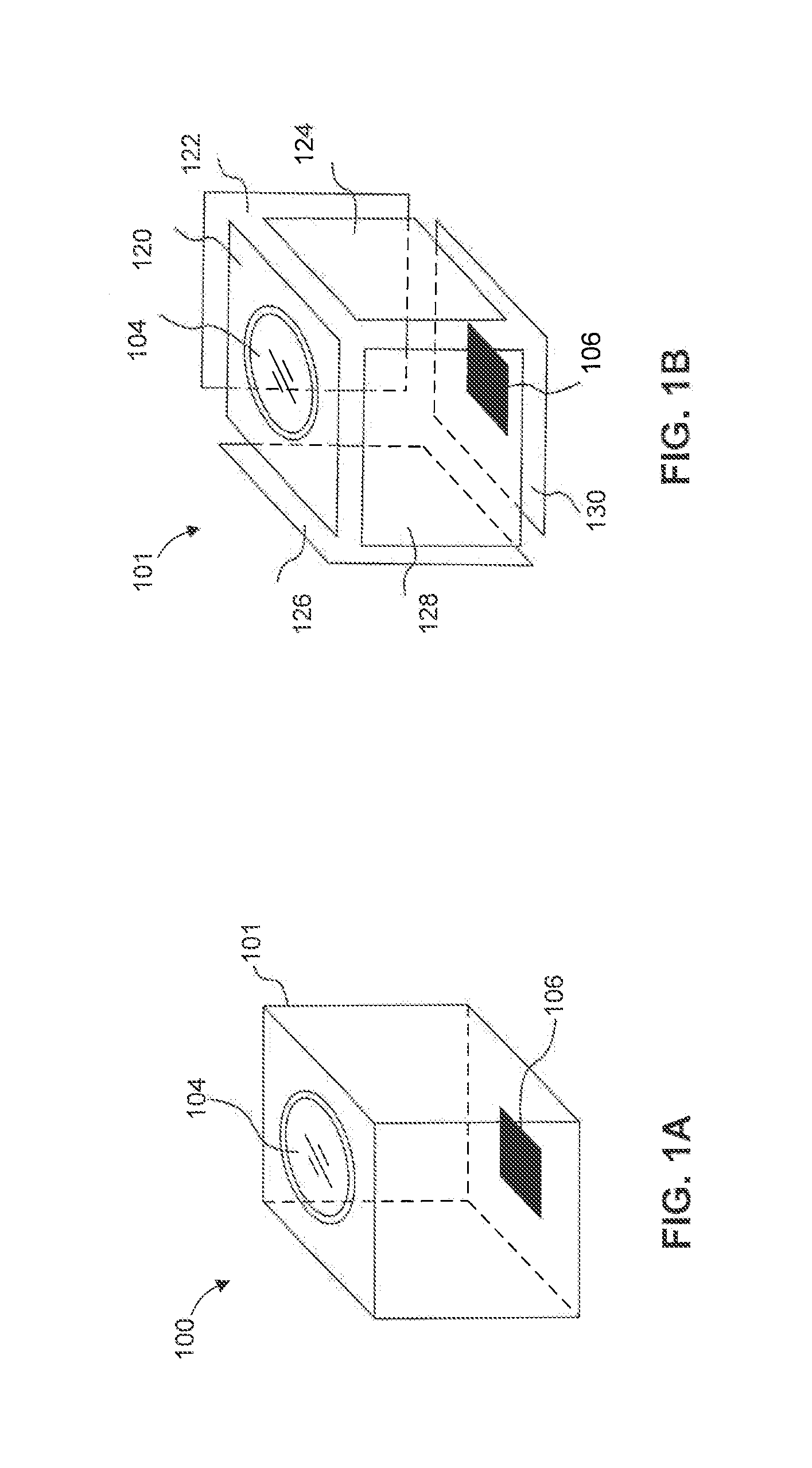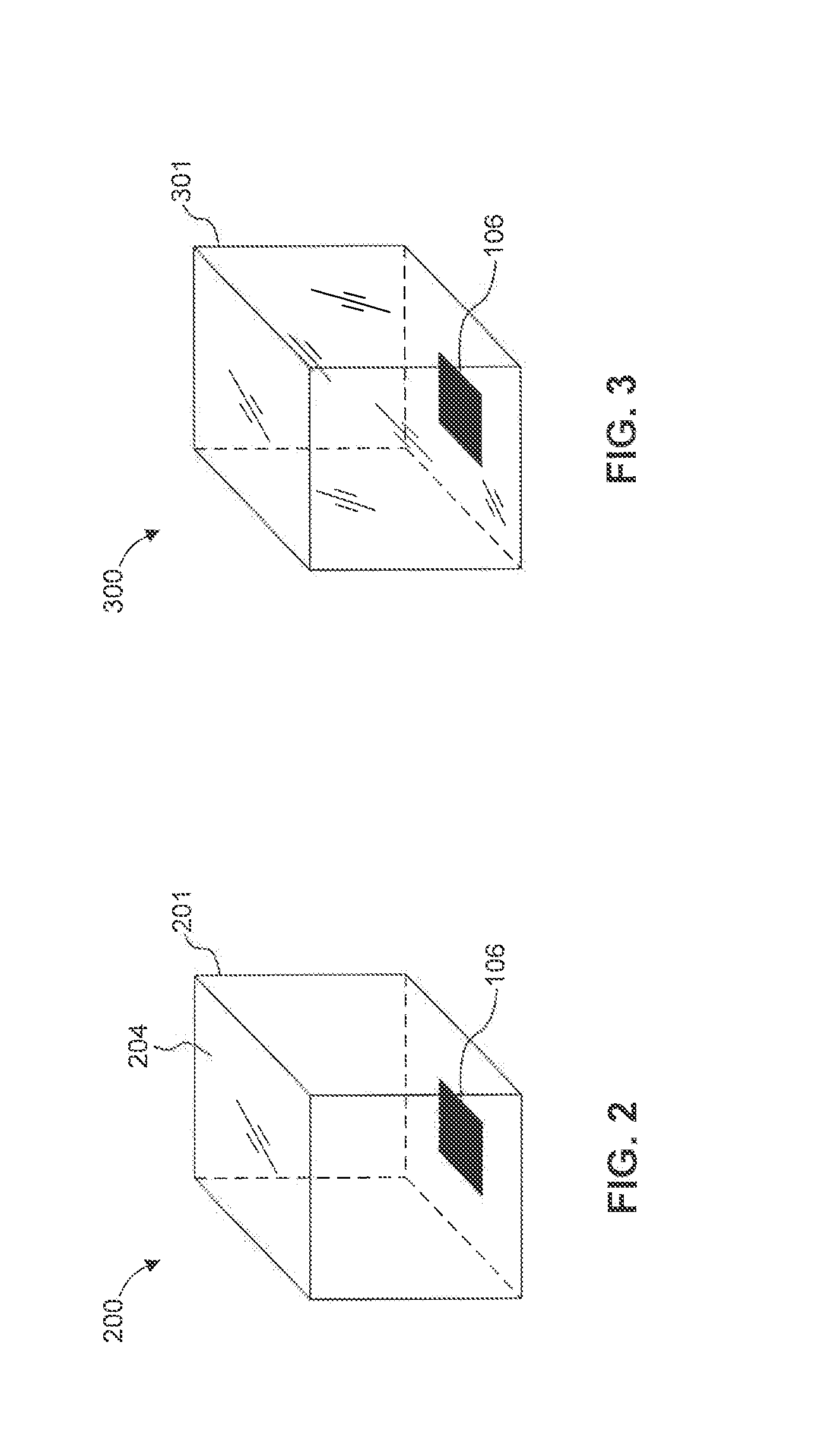Radiating Systems for Affecting Insect Behavior
a radiation system and insect technology, applied in the field of electromagnetic radiation systems for affecting insect behavior, can solve the problems of reducing marketability, financial hardship for many farmers, and the problem of large worldwide pest management problems
- Summary
- Abstract
- Description
- Claims
- Application Information
AI Technical Summary
Benefits of technology
Problems solved by technology
Method used
Image
Examples
Embodiment Construction
[0022]Embodiments of the present invention provide a radiating insect decoy system for inducing behavioral changes in various types of insects. Inducing behavioral changes may be in the form of producing attractive, repulsive, or chaotic movement responses in various insects with respect to the embodiments of the present invention.
[0023]FIG. 1A illustrates an insect decoy system 100 according to an embodiment of the present invention. System 100 includes a vapor-isolated vessel 101. Vapor-isolated vessel 101 may include a window 104, and a chemical compound 106. Vessel 101 may include sides 120, 122, 124, 126, 128, and 130, as illustrated in FIG. 1B in an exploded view of system 100. Vapor-isolation may be provided, for example, by hermetically sealing vessel 101 or by placing vessel 101 under vacuum. As used herein, the term “vapor-isolated” does not require 100% vapor isolation. A vapor-isolated vessel may be substantially vapor-isolated, such as 90-95% vapor-isolated if, for exam...
PUM
 Login to View More
Login to View More Abstract
Description
Claims
Application Information
 Login to View More
Login to View More - R&D
- Intellectual Property
- Life Sciences
- Materials
- Tech Scout
- Unparalleled Data Quality
- Higher Quality Content
- 60% Fewer Hallucinations
Browse by: Latest US Patents, China's latest patents, Technical Efficacy Thesaurus, Application Domain, Technology Topic, Popular Technical Reports.
© 2025 PatSnap. All rights reserved.Legal|Privacy policy|Modern Slavery Act Transparency Statement|Sitemap|About US| Contact US: help@patsnap.com



